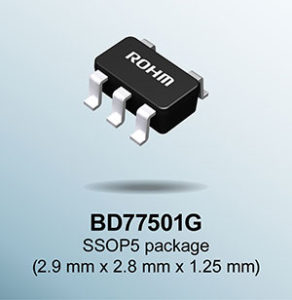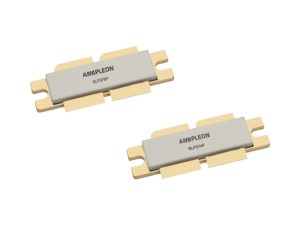
EDACafe Editorial Roberto Frazzoli
Roberto Frazzoli is a contributing editor to EDACafe. His interests as a technology journalist focus on the semiconductor ecosystem in all its aspects. Roberto started covering electronics in 1987. His weekly contribution to EDACafe started in early 2019. Small-size low-power FPGAs; open source self-driving platform; AI-powered robotsJuly 3rd, 2020 by Roberto Frazzoli
Catching up with an announcement that dates back to a few days ago, this week’s news summary places FPGAs in the spotlight. Other news includes the launch of a Palo Alto-based robotics startup, adding to a Bay Area scenario that features at least another innovative robotics company, Covariant (Berkeley, CA). Advancements in discrete and passive components complete this week’s roundup. Lattice innovates general-purpose FPGAs Up to twice the I/O density per square millimeter in comparison to similar competing FPGAs: this is what Lattice is claiming for its new family of low-power, general purpose FPGAs, called Certus-NX. Manufactured using a 28 nm FD-SOI process technology, the new devices boast a much smaller package, greater I/O density, and lower power compared to competing FPGAs of similar gate counts. Compactness enables, for example, to create a complete PCIe solution in 36 mm2. Other features of the new FPGAs include instant-on performance (with individual I/Os able to configure in 3 ms, and full-device startup in 8-14 ms depending on device capacity), support for ECDSA authentication, better soft-error rate (SER) performance. Notable IP blocks available on Certus-NX include 1.5 Gbps differential I/O, 5 Gbps PCIe, 1.5 Gbps SGMII, and 1066 Mbps DDR3. A five-page white paper from analyst Linley Gwennap provides a detailed description of the Certus-NX and a comparison with similar FPGAs from Intel and Xilinx.
An open-source self-driving platform A popular robotics framework called ROS is the basic element of a fully-functional open-source self-driving platform for low-speed urban vehicles launched by Project Aslan, an international not-for-profit collaboration involving specialized companies, universities, transport authorities and engineers. Some of the project founder members include HAN University of Applied Sciences (Holland), RoboSense, StreetDrone, Enkrypta, Testbed UK, professors from Coventry University (UK) and Monash University (Melbourne, Australia). At www.project-aslan.org, engineers can freely download an open-source resource enriched by software contributed by the founders and augmented with data from 22 autonomous vehicles currently deployed in a variety of trial use-cases in locations ranging from Hong Kong to the UK. AI-powered robots handle a wide variety of objects Rios, reportedly emerged from stealth a few days ago, claims to “have developed a first-of-its-kind haptic intelligence platform for robots” enabling them “to handle hard-to-automate tasks that typically require human-level-dexterity and involve manipulating thousands of SKUs.” The company’s hardware-software technology stack includes a central AI platform (brain), AI-driven perception system (eye), and haptic intelligence (touch). According to Rios, “dedicated hardware is the only way to achieve a dexterous multi-purpose robot. A software-only approach on ‘generic’ hardware and reliance on vision only simply doesn’t cut it”. With headquarters in Palo Alto, CA, and a pilot facility in San Carlos, CA, Rios operates with a “robots-as-a-service” (RaaS) business model. High-speed op amp is immune to load-capacitance-induced oscillation Load-capacitance-induced oscillation is a common problem for op amps used to detect anomalies – in industrial and consumer equipment – by quickly amplify minute sensor signals. Since capacitive loads often depends on wiring, this problem that can make board design very challenging. Now Rohm is addressing this need with a new high-speed op amp that is completely immune to load-capacitance-induced oscillation. Dubbed BD77501G, the new CMOS op amp offers a 10V/µs slew rate and – according to Rohm – excellent noise immunity, eliminating the need for RC filters. The device is a member of Rohm’s Emarmour series, a family of op amps and comparators that leverage proprietary technologies – covering circuit design, layout, and processes – to achieve high noise immunity. Si LDMOS transistors for VHF and UHF applications reach 80% efficiency Designed for use in ultra-high-power RF power amplifiers, capable of delivering hundreds of kilowatts, two new 50V Si LDMOS (laterally-diffused MOS) RF power transistors from Dutch manufacturer Ampleon reach an operating efficiency of up to 80 % at 225 MHz under Class AB operation. The 1,200-Watt BLF978P and the 500-Watt BLP974P typically offer a power gain of 25 dB at a frequency range of between 225 MHz to 700 MHz. Energy efficiency is an extremely important aspect of kilowatt-output RF systems since the need for effective thermal management is a key design consideration. The smallest 1-microfarad multilayer ceramic capacitor Murata has announced the development of what is believed to be the world’s smallest, laminated multilayer ceramic capacitor (MLCC) with a capacitance value of 1-microfarad in the 01005 inch size (0402M) measuring just 0.4 x 0.2 x 0.2 millimeters. A version with a rated voltage of 4 Vdc is already in mass production, while a version with a rated voltage of 6.3 Vdc will be mass-produced in 2021. Murata’s proprietary thin layer technology for ceramic elements and thin-sheet formation technology has contributed to a 35% reduction in footprint and a 50% reduction in volume ratio when compared with the company’s existing product with the same capacitance value. These improvements can make a difference in products such as some smartphones, where more than one thousand 1-microfarad capacitors are installed. Mergers and acquisitions US-headquartered Electronic Manufacturing Service providers DataED and Bestronics will merge to create a new company called Emerald EMS – while continuing to operate day-to-day under their current brands. The combined company will have two manufacturing facilities located in Boston’s “high-tech corridor”, two in San Jose, and two in Shenzhen, China. Emerald EMS specializes in high mix, low- to medium-volume manufacturing for high-reliability markets in the medical, aerospace/defense, industrial controls, semiconductor and utilities infrastructure sectors. The company offers integrated design and manufacturing services, including prototyping, new product development and testing, volume production, supply chain management, direct order fulfillment and end-of-product lifecycle management. Galaxy Semiconductor has signed a definitive agreement to acquire substantially all of the assets of Quantix, a Mentor business offering test data management and analysis solutions for the semiconductor industry. The software products that Galaxy is acquiring from Mentor include Examinator, Examinator Pro, Yield Man, PAT Man, and Offline Shmoo. As explained in this article from Semiconductor Engineering, Ireland-based Galaxy was founded in 1998 and was then acquired by Mentor Graphics in 2016. The new Galaxy will be based in Menlo Park, CA and its management team will include previous founder Philippe Lejeune. |
|
|
|||||
|
|
|||||
|
|||||










